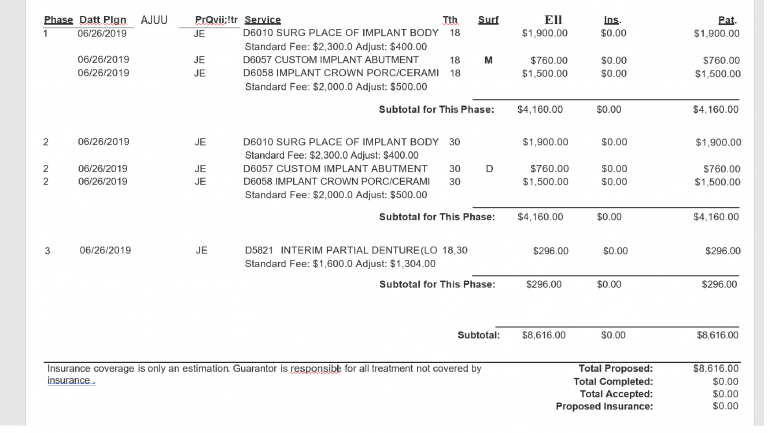
Dental Code D7285: Incisional biopsy of oral tissue-hard (bone, tooth)
Dental code D7285 corresponds to the incisional biopsy of oral tissue-hard, specifically involving bone or tooth samples. This diagnostic procedure is performed when there is a need to analyze abnormal or suspicious tissue in the oral cavity. By obtaining a small sample from the hard tissues, such as bone or tooth, the dentist can send it to a laboratory for further examination.
Detailed Information about the Procedure
Dental code D7285 refers to the incisional biopsy of oral tissue-hard, specifically involving bone or tooth samples. This procedure is performed to obtain a small sample of abnormal or suspicious hard tissues in the oral cavity for further examination in a laboratory. The purpose of the biopsy is to aid in the accurate diagnosis and treatment planning of various oral conditions. By analyzing the collected tissue sample, dentists can gain valuable insights into the nature and extent of the oral health issue, allowing them to provide appropriate and effective treatment for their patients.
Patient Evaluation and Preparation
Before conducting the incisional biopsy, a comprehensive evaluation of the patient's oral health is necessary. This evaluation may include a visual examination, review of medical history, and diagnostic imaging such as X-rays or CT scans. These assessments help the dentist understand the patient's overall oral health and identify any areas of concern. It is crucial for the dentist to be aware of the patient's medical conditions, medications, and allergies to ensure a safe and effective procedure.
Local Anesthesia Administration
To ensure the patient's comfort during the procedure, the dentist administers a local anesthetic to numb the area where the biopsy will be performed. Local anesthesia temporarily blocks the sensation of pain in the specific region being treated. The dentist uses a small needle to inject the anesthetic into the surrounding tissues, allowing the patient to remain comfortable and relaxed throughout the procedure. The administration of anesthesia may cause a slight pinch or pressure, but it is generally well-tolerated.
Incision and Sample Collection
Once the local anesthesia has taken effect, the dentist carefully makes a small incision in the targeted area, which could be the bone or tooth. The incision is made using precision instruments to ensure minimal trauma to the surrounding tissues. The dentist then extracts a small sample of the hard tissue using specialized tools. The size of the sample collected depends on the specific diagnostic requirements and the nature of the suspected condition. It is important to note that the incision and sample collection are performed with precision and care to minimize discomfort and promote optimal healing. During the incisional biopsy procedure, the dentist employs meticulous techniques to ensure accurate and representative sample collection. The precision instruments used minimize trauma to the surrounding tissues, reducing the risk of complications and promoting faster healing. The dentist carefully selects the size of the sample based on the specific diagnostic requirements and the suspected condition being investigated.
The incision itself is typically small to minimize discomfort for the patient. The dentist may use a scalpel or a specialized biopsy punch to create the incision, depending on the location and nature of the tissue being sampled. Great care is taken to ensure that the incision is made in a controlled manner to avoid unnecessary damage to adjacent structures.
Once the incision is made, the dentist utilizes specialized tools to extract the targeted hard tissue sample. These tools may include forceps, curettes, or bone biopsy needles. The dentist carefully navigates the instruments within the oral cavity, ensuring precise and efficient collection of the sample. The collected tissue sample is then placed in a suitable container and prepared for laboratory analysis.
Hemostasis and Wound Closure
After the sample is collected, the dentist takes steps to control any bleeding that may occur. This could involve applying gentle pressure, using a hemostatic agent, or utilizing sutures to close the incision. The chosen method depends on the size and location of the incision. Sutures, if used, are typically absorbable and do not require removal in most cases. Hemostasis and wound closure are essential to promote healing and minimize the risk of infection.
Post-Procedure Instructions and Follow-Up
Following the incisional biopsy, the dentist provides the patient with detailed post-procedure instructions. These instructions may include information about managing any discomfort, prescribing pain medications if necessary, outlining dietary restrictions, and providing guidance on oral hygiene practices. It is crucial for patients to adhere to these instructions diligently to ensure proper healing and recovery. The dentist also schedules a follow-up appointment to discuss the biopsy results and determine the appropriate course of treatment, if required.
Summary of Dental Code D7285
Dental code D7285, involving the incisional biopsy of oral tissue-hard (bone, tooth), is a crucial diagnostic tool in dentistry. This procedure allows dentists to examine abnormal or suspicious hard tissues in the oral cavity, such as bone or tooth samples, to aid in the diagnosis and treatment planning of various oral conditions. By understanding the steps involved in this procedure, patients can gain a better understanding of the process and its significance. Accurate diagnosis through incisional biopsy empowers dentists to develop effective treatment plans, leading to improved oral health and overall well-being.
Elevate your dental care experience with Dr. BestPrice! Let's make your smile dreams a reality.
